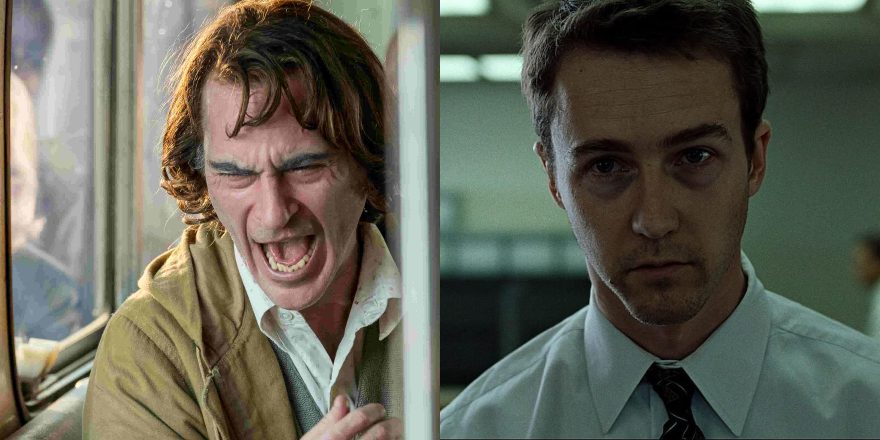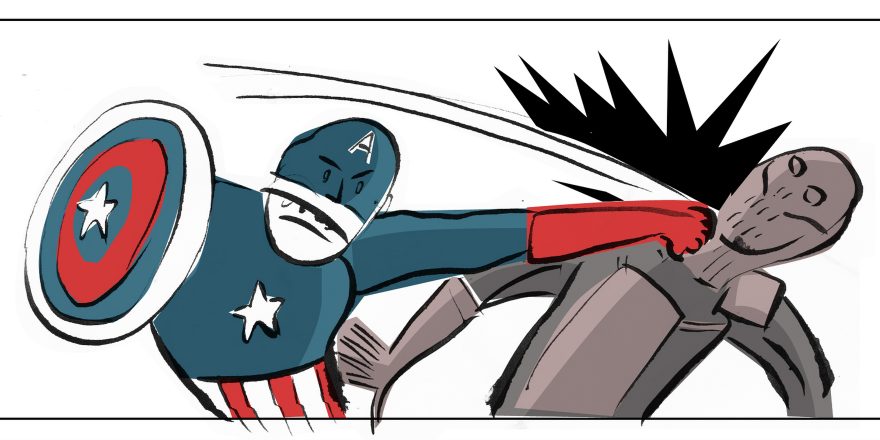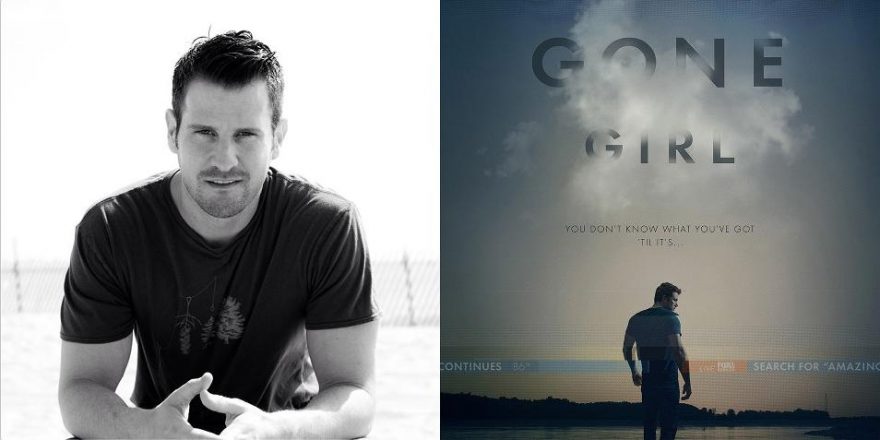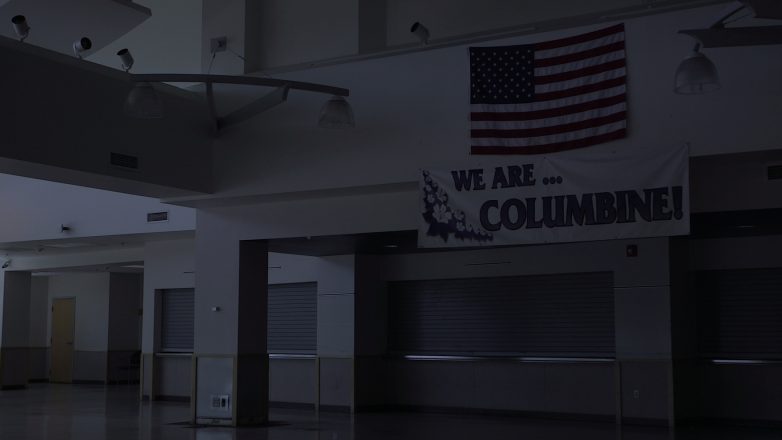Culture often provides the language and narratives we use to understand the world and justify ourselves. Movies seduce us. What we consume can impact our perspectives and sometimes even our actions. The transcendent coupling of motion pictures and sound affects us consciously, in ways we comprehend, and unconsciously, in ways we only begin to see and understand through reflection. If visual media did not have this potential influence, corporations would not pour billions of dollars each year into advertising, Taxi Driver would not inspire an assassination attempt and The Birth of a Nation would not have contributed to the resurgence of the Ku Klux Klan. Life does not imitate art, but is sometimes changed by it, and only occasionally for the better.
Like Fight Club before it, the new Joker movie has the potential to seduce and inspire lonely, angry white boys in the worst possible way, seemingly because the filmmaking team do not understand what they are doing and do not care to learn. The crucial difference is that Fight Club was initially a failure whereas Joker is a massive intellectual property (IP) that has already been seen by a ludicrous, record-shattering number of people, many of them fanboys who would not be exposed to the film, or even know about it, if it were just some arthouse indie (see: You Were Never Really Here) and not a comic-book movie. Joker is an adult film being effectively marketed to teenagers: Hollywood’s version of bubble gum-flavored vape cartridges. It will spawn shittier imitators over many years to come. That the film is rated R, that it purports to be the real-deal and not some kiddie fantasy, will only make underage kids more stoked to see it and more likely to treat what it represents as an endorsement. This movie, in its cinematic technique, tone, dramatic structure and by virtue of existing in the first place, makes the Joker more iconic than he already is. Teenagers love to rebel, to seek out and embrace whatever adults tell them is bad or too grown-up for them. Tethering this adult story to a comic-book property ensures that a large part of the audience will be young people, many of whom will instinctually roll their eyes at authority and potentially take away a terrible message from this film: that acts of violence can catalyze self-actualization and transform ourselves and our lives for the better. This theme is easily taken away from the plot and arc of the main character, which basically is: lonely, unhappy man, struggling with mental illness, is driven to violence by a society that doesn’t give a shit about him. “I thought it would bother me,” he says about the act, “but it didn’t.” Through this act he achieves fame, gains confidence and inspires a movement. He is happier at the end of the movie than he is at the beginning. The connections made in this story between mental illness, neuroatypicality and remorseless violence are inaccurate, damaging and deserving of their own essay.
Even when anti-heroes are done well, they might end up as heroes to some assholes. Consider Breaking Bad. Many fans obsessively loved the meth-dealing anti-hero protagonist and hated his “buzzkill” wife to such an extent that they harassed and sent death threats to the actress who played her. The team behind Joker deem their work a “cautionary tale” and yet Xan Brooks, in his five-star Guardian review, writes how it is a film “that invites us to love the monster.” I would add to Brooks’ statement that the filmmaking style invites us to be seduced by the monster: in the way the filmmakers utilize music cues, slow-motion camerawork and bullshit lens flares, in how they linger on Joaquin’s lips and features and the intimacy of the close-ups, and in the deep empathy all the storytellers clearly have for their protagonist’s descent into violent madness. This all begs the question: if Joker is a cautionary tale, to whom is it actually providing caution? Is it a cautionary tale for would-be active shooters, warning them against the myth that an act of terror can make you a legend? Will it encourage people who are having violent thoughts to seek help? Or is it a cautionary tale for the rest of society, warning us to take care of our disillusioned white boys, or else? What do you get when you cross a mentally-ill loner with a society that abandons him and treats him like garbage? According to this movie, you get what you fucking deserve.
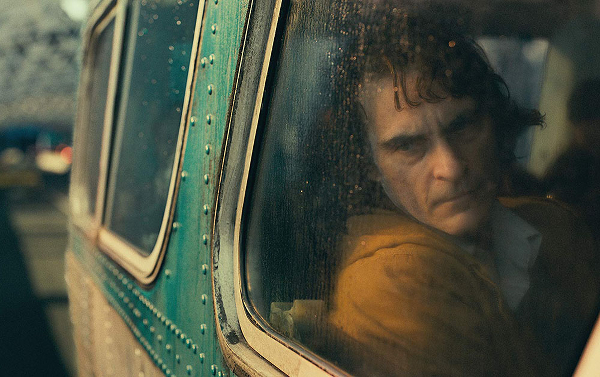
To love one’s enemy is divine; to immortalize and perpetuate their bullshit, however, is a living nightmare. Maybe a comic-book movie that empathizes so powerfully with the making of a white, male domestic terrorist should remember it’s a comic-book movie, understand the myth-making qualities of the genre and anticipate its audience better. That’s the massive, inescapable issue: Todd Phillips’ terrible, omnipresent choice to shackle this story to a genre and IP that has historically been and is still mostly for fanboys. If Phillips had avoided the comic-book trap and told this story as an original film, if Arthur Fleck (Joaquin Phoenix) just stayed Arthur Fleck and did not become Joker, we could consider and discuss the film on its cinematic and dramatic merit alone. Unfortunately, however, whatever the movie wants to say and do is ultimately secondary to the success and longevity of the IP, and a huge part of that requires giving its core audience something to obsess over. If this is a cautionary tale, then it is also a failure, because it will ultimately capitalize on and contribute to the legend it intended to dispel. Like Joker, David Fincher’s Fight Club is a seductive tale that inadvertently operates as propaganda for the exact ideas and values it superficially purports to be against. Re-evaluating the representation in and impact of Fight Club, and how the filmmakers responded to the consequences of their filmmaking style, could offer insight into how Joker will play out and why.
After the 1999 release of Fight Club, underground fight clubs began popping up all over the place. When confronted with the unintended consequences of his filmmaking, Fincher refused to accept accountability. “We were making a satire,” he said in an interview. “We were saying, this is as serious about blowing up buildings as The Graduate is about fucking your friend’s mom.” Cool. And to be fair, at the end of the film, the narrator – spoiler alert! – kills the part of himself that is Tyler Durden. By this point, however, Fincher and company have just spent the better part of two-and-a-half hours using every tool at their disposal to make Tyler Durden and his philosophy as iconic and enticing as possible.
Brad Pitt was named “Sexiest Man Alive” in 1995 and again in 2000. In Fight Club, he is treated as such by the filmmaking team: in how they light him, dress him, make him up, block his scenes and in how the camera and storytellers relate to and capture him. The filmmakers’ intentions are understandable, because they want to convincingly portray the narrator (Edward Norton) being drawn in by Tyler Durden. The audience, too, is seduced by this use of cinematic language, and the seduction is complete for many viewers by the time the supposed “moral resolution” arrives at the end. Ineffective satire has the potential to propagandize the people or ideas the artist set out to criticize. Cautionary tales can devolve into self-fulfilling prophecies.
Of course, to represent something on screen is not inherently to endorse it; a movie that depicts fight clubs is not intrinsically for or against fight clubs. However, when Fincher and his team spend 98 percent of their movie showing how cool Tyler Durden and his fight clubs are, why are they surprised when certain predisposed viewers ignore the “moral resolution,” embrace their inner Tyler and start their own fight clubs and Project Mayhems?
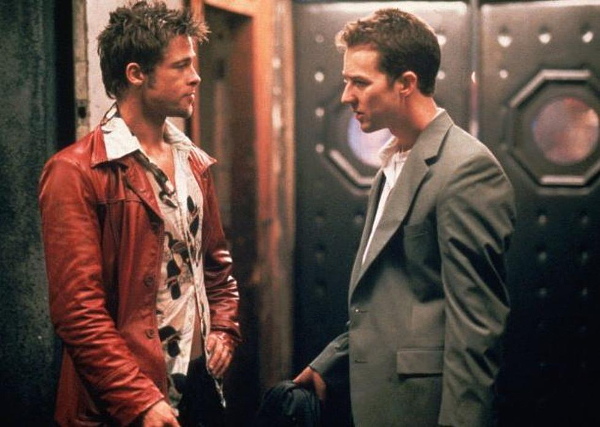
Todd Phillips does not know how to represent something cinematically without endorsing it. From Road Trip and Old School up through The Hangover trilogy, Phillips has excelled at comedies of errors about the plight of straight white men growing up or, more often, refusing to do so. With Joker, the dark undercurrents of toxic masculinity and patriarchy in his previous work have risen to the surface. All Phillips’ other films implicitly demand the viewer trust the inherent virtue and goodness of mediocre white men. Joker offers up the same idea, just in a different genre, a drama instead of a comedy. Phillips perhaps cares more deeply for this protagonist than any other character he has ever represented on screen. He cares enough to ask us all to take his story seriously and feel for him. I’m fairly certain that lonely, angry white boys will see their own hardship in this comic-book origin story and be dressing up in record numbers like Joker this Halloween. Hopefully that will be the extent of the influence.
The essential difference between Fight Club and Joker is Fight Club was a critical and commercial failure. The studio hated it, the theatrical release went largely unnoticed and only on DVD and in repertory screenings over the next several years did the film truly find its audience. Joker has the full force of Warner Bros. and the DC universe behind it, and the character is one of their major IPs. The film is intended to launch DC Black, a series of DC-based standalone films. The film is collecting critical credentials left and right, winning the Golden Lion at this year’s (rapist-enabling) Venice Film Festival and getting rave reviews at TIFF. If Joker were merely a remake of Scorsese’s The King of Comedy, which it partially is, it could be made for much less, it would be much more difficult to finance and infinitely fewer people would automatically see it.
It has been almost a dozen years since Heath Ledger overdosed a few months after production wrapped on The Dark Knight. When told of his suicide, Jack Nicholson, who played the Joker in the late ’80s, reportedly responded, “Well, I warned him.” And lest we forget July 20, 2012, in Aurora, Colorado, when a lonely, angry 24-year-old white guy shot up a screening of The Dark Knight Rises. Twelve people were killed and another 70 were injured, 58 of them from gunfire. At the time, the current New York police commissioner Ray Kelly stated that James Holmes “had his hair painted red [and] said he was ‘the Joker,’ obviously the enemy of Batman.” Though this turned out to be a lie, it further connected the character with real-life violence in our shared cultural consciousness.
Things are different now than they were in 1999, when Fight Club was released. The shooting at Columbine was 20 years ago. When Columbine happened, it felt unprecedented, and sent shockwaves through the country. Shootings like that are pretty much an everyday occurrence now. Students in schools across the country are required to participate in active shooter drills that are traumatizing in their own way. Large-scale acts of domestic terrorism occur in America several times each year: not just at schools, but at garlic festivals and country-music concerts, at churches, Walmarts and sorority houses. Being a high-school student is comparably dangerous to being an American soldier in a combat zone.
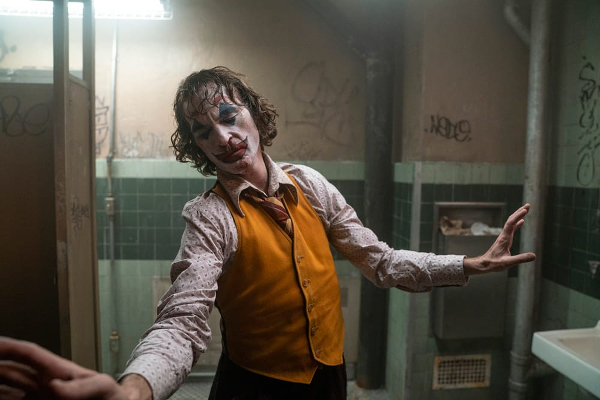
I respect Todd Phillips for attempting something scary, complicated and ambitious. Joaquin Phoenix is undeniably a force of nature. Why, oh why, did they tether their creation to such a monstrous and ill-intentioned corporate beast? No matter how the movie ends, this is not the last we will hear from the character. Warner Bros. is likely about to greenlight Joker 2, because IPs exist to make as much money as possible, for as long as possible. You can bet every studio in Hollywood is prepping their own rip-off for next season. In every case, the financial imperative will take priority over the filmmaker’s thematic objectives, because that’s how capital investments work in our system.
To try and understand better how our society creates domestic terrorists is a difficult yet admirable question to investigate. Unfortunately, the filmmakers and studio behind Joker have nothing new to add to the conversation. We do not need one more manifesto posted to 4chan by an active shooter to confirm what we already know: that lonely, angry white boys are driven to acts of violence and domestic terror by a society or individuals they perceive as cruel, unfair and merciless. If telling us this is the movie’s reason for existence, then it does not need to exist. Tethering this message to a comic-book IP is at best misguided and at worst idiotically toxic. In Joker’s compelling, seductive origin story, it is writ large that a sweet man-child struggling with mental illness, put here to spread joy and laughter, is driven by society to violence and to infamy through an act of terror, ultimately becoming as notorious a villain as there is. This is the story every shooter since Columbine has told himself: the myth of immortality. The trouble is, the Joker is immortal. As an everlasting intellectual property, he validates the myth and in doing so provides justification for the lies shooters tell themselves before committing cowardly acts of mass violence. “I haven’t been happy one fucking minute of my life,” Arthur tells his social worker. It is only through violence that he is able to self-actualize and become the man he was meant to be, someone with the power to inspire and transform society’s “ugliness” into something “beautiful,” somebody who, for the first time in his entire life, is truly happy. How many troubled young men will be seduced by that?


